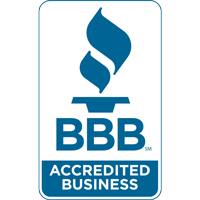
We spend a lot of time indoors. As a matter of fact, the Environmental Protection Agency (EPA) has estimated being within a building makes up 90% of our days. However, the EPA also has found your indoor air can be three to five times dirtier than outside your home.
That’s due to the fact our homes are securely sealed to increase energy efficiency. While this is great for your energy costs, it’s not so fantastic if you’re amid the 40% of the population with respiratory allergies.
When outdoors ventilation is insufficient, pollutants such as dust and volatile organic compounds (VOCs) could get trapped. Consequently, these pollutants can aggravate your allergies.
You can improve your indoor air quality with clean air and usual cleaning and vacuuming. But if you’re still having problems with symptoms while you’re at home, an air purifier could be able to provide assistance.
While it can’t remove pollutants that have settled on your couch or carpet, it might help freshen the air traveling around your home.
And air purification has also been scientifically confirmed to help lower some allergic symptoms, according to the American College of Allergy, Asthma and Immunology. It might also be appropriate if you or someone in your household has lung issues, like emphysema or COPD.
There are two models, a portable air purifier or a whole-home air purifier. We’ll examine the advantages so you can figure out what’s appropriate for your home.
Whole-House Air Purifier vs. Portable Air Purifiers
A portable air purifier is for a single room. A whole-house air purifier accompanies your heating and cooling equipment to clean your entire residence. Some kinds can clean independent when your home comfort unit isn’t running.
What’s the Best Air Purifier for Allergies?
Seek an option with a High Efficiency Particulate Air (HEPA) filter. HEPA filters are placed in hospitals and offer the best filtration you can get, as they catch 99.97% of particles in the air.
HEPA filters are even more powerful when combined with an ultraviolet (UV) germicidal light. This dynamic combination can destroy dust, dander, pollen and mold, all of which are standard allergens. For the ultimate in air purification, evaluate a unit that also has a carbon-based filter to reduce household odors.
Avoid buying an air purifier that generates ozone, which is the top ingredient in smog. The EPA cautions ozone may worsen respiratory issues, even when emitted at low settings.
The Allergy and Asthma Foundation of America has created a list of questions to consider when buying an air purifier.
- What can this purifier take out from the air? What doesn’t it extract?
- What’s its clean air delivery rate? (A bigger amount means air will be purified more rapidly.)
- How frequently does the filter or UV bulb need to be replaced]? Can I complete that by myself?
- How much do new filters or bulbs cost?
How to Reduce Seasonal Allergy Symptoms
Want to get the {top|most excellent|best] results from your new air purification system? The Mayo Clinic suggests doing other measures to reduce your exposure to things that can trigger seasonal allergies.
- Stay indoors and keep windows and doors sealed when pollen counts are high.
- Have other family members trim the lawn or pull weeds, since these jobs can worsen symptoms. If you are required to do this work yourself, you might want to consider wearing a pollen mask. You should also rinse off without delay and put on clean clothes once you’re completed.
- Avoid drying laundry outdoors.
- Run your air conditioner while at your house or while in the car. Consider using a high efficiency air filter in your house’s HVAC unit.
- Equalize your house’s humidity percentage with a whole-house dehumidifier.
- Hardwood, tile or linoleum are the ideal flooring kinds for reducing indoor allergens. If your home has carpet, install a HEPA filter on your vacuum cleaner.
Let Our Specialists Manage Your Indoor Air Quality Requirements
Ready to take the next step with installing a whole-house air purifier? Give our specialists a call at 847-306-8990 or contact us online to request an appointment. We’ll help you find the ideal unit for your house and budget.

